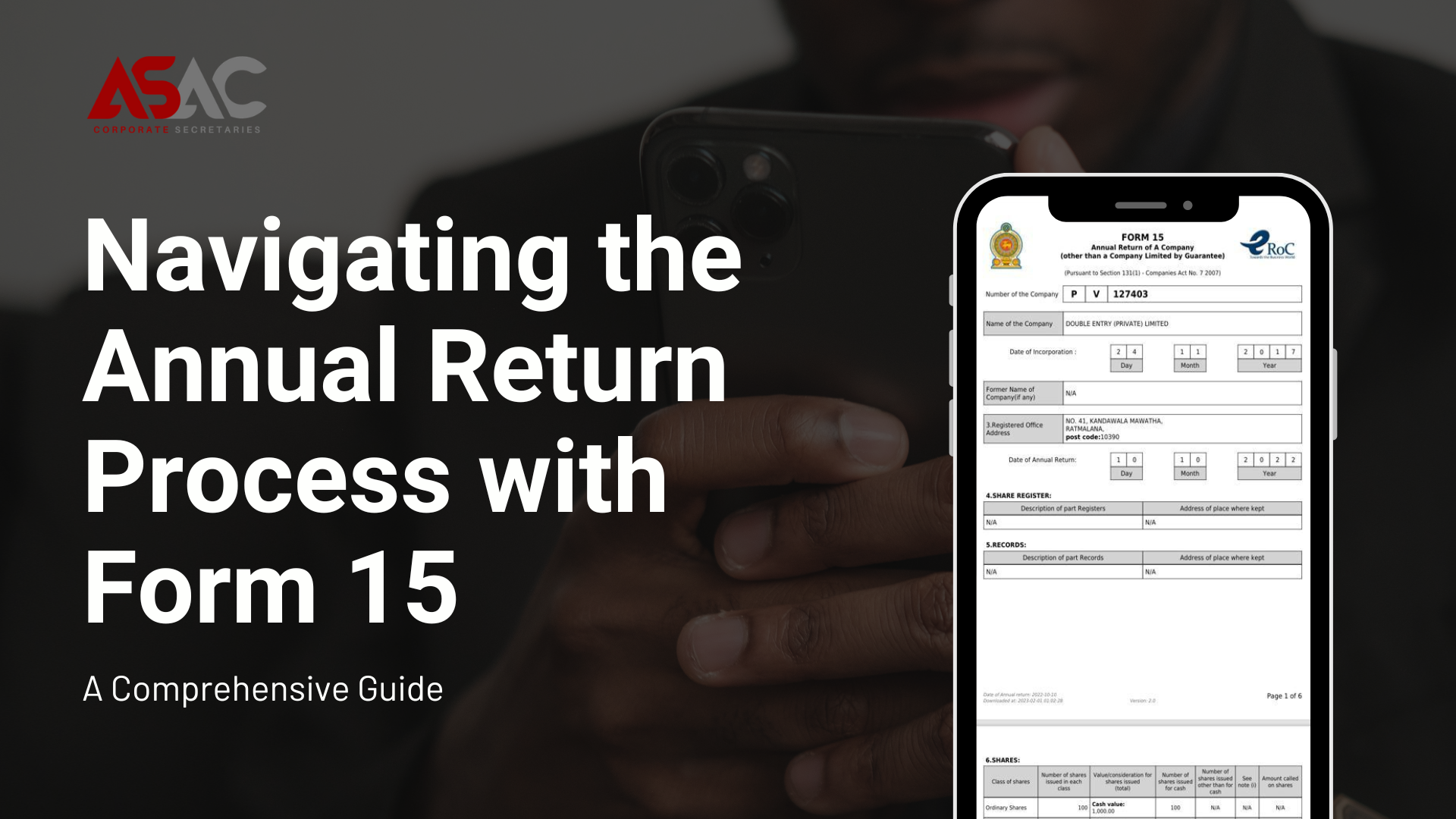Navigating the Annual Return Process with Form 15: A Comprehensive Guide

As the year winds down, it’s time for companies to ensure they’ve got all their ducks in a row for the annual return filing with the Registrar General of Companies. This essential process is encapsulated in the mandatory Form 15, and there are some noteworthy updates from the Registrar General of Companies to be aware of this year. Before delving into the latest developments, let’s start with the basics:
1. What is an Annual Return?
The annual return, encapsulated in Form 15, stands as a crucial document that all Registered Limited Liability Companies must submit to the Registrar General of Companies. It serves as a comprehensive repository of the company’s details.
2. What’s Included in the Annual Return?
Let’s break down the key components:
- Company Number: Private Limited (PV), Public Company (PB), or Quoted Public Company (PQ).
- Date of Incorporation: The company’s registration date as per the Form 41 certification.
- Name of the Company: The legal name, usually ending with (PVT) LTD or (PRIVATE) LIMITED for Private Limited companies.
- Former Names: Any previous names the company had.
- Registered Address (Table 3): The company’s address on the Annual Return date.
- Date of the Annual Return: Selected based on the company’s incorporation date for the first return and subsequent ones based on the previous annual return and annual general meeting dates.
- Share and Company Records (Tables 4 & 5): Details of record locations if different from the registered address.
- Shares (Table 6): Types and numbers of shares issued, including considerations and share details.
- Directors (Table 7): Full details of all directors.
- Secretary (Table 8): Details of the Company Secretary.
- Auditors (Table 9): Information about the auditors.
- Last Date of the Annual Return (Table 10): For new companies, it’s the incorporation date; for existing ones, it’s based on the last filed annual return.
- Existing Shareholders (Table 11): Details of shareholders and their shares.
- Share Transfers (Table 12): Details if there are share transfers.
- Charges (Table 13): Details of charges created by banks or financial institutions.
- Annual General Meeting (Table 14): Mention of the annual return date and resolutions if no AGM was held.
- Signatures (Table 15): Confirmation by directors and the company secretary.
- Declarations (Table 16): Declarations under relevant sections of the Companies Act.
3. How Often Should Form 15 be Lodged?
- First Annual Return: After 15 months of incorporation but before 18 months.
- Subsequent Annual Returns: Within 12 months from the previous annual return date and before 15 months.
4. What If Not?
Failure to submit the return will result in penalties from the Registrar General of Companies, and company directors may be subject to fines.
5. What’s New with Form 15?
- eROC Platform: All forms are now processed through the new eROC platform.
- Submission Process: Company officers receive logins via email, and forms can be generated and submitted as scanned PDFs.
- File Size Limit: Ensure files are under 4MB as the system only accepts files of this size.
- Verification and Approval: The Registrar Office will verify details, and upon approval, an email notification is sent. Certified copies can be obtained with a QR code upon payment.
In Conclusion:
Form 15 stands as one of the most critical documents for a limited liability company. Its detailed insights are relied upon by banks, financial institutions, and various stakeholders. At Ananda Sirisena and Co (ASAC), we provide the latest certified copies of Form 15 to our clients via our Mobile App, The Boardroom, ensuring easy access anytime, anywhere in the world.
For further guidance or assistance, feel free to contact us at www.anandasirisena.lk. Make sure to stay compliant and keep your company records up to date!